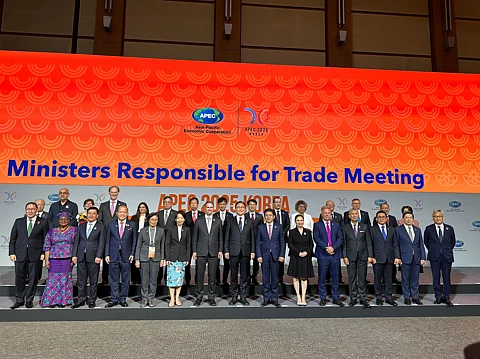
- NEWS
- the EDIT
- COMMENTARY
- BUSINESS
- LIFE
- SHOW
- ACTION
- GLOBAL GOALS
- SNAPS
- DYARYO TIRADA
- MORE

For a farmer in Mindanao, a trade deal signed miles away from where he is now means a better price for his pineapples.
Under President Ferdinand R. Marcos Jr., the goal is to bring the benefits of global trade directly to local communities. This clear marching order for the Department of Trade and Industry (DTI) to open new markets and give Filipino products an edge is at the core of his Bagong Pilipinas agenda.
The proof is in a wave of new and modernized free trade agreements (FTAs) designed to lift small businesses and farmers and create more business opportunities, putting the Philippines in a strong position in the region.
This approach is already paying off. An example is the FTA with South Korea, the Philippines’ 6th largest trading partner in 2024, which was implemented on December 31, 2024. The FTA is helping Filipino farmers by eliminating tariffs on fresh bananas, canned pineapple, and other tropical fruits. Before this deal, these products faced a high tariff of 30%. This important win came as Philippine exports to South Korea had already grown by 11.26% from USD 3.13B in 2022 to USD 3.48B in 2023.
At the same time, the Philippines is getting more involved in the world's biggest trade group, the Regional Comprehensive Economic Partnership, which the country joined in June 2023.
To help local businesses, especially micro, small, and medium enterprises, the DTI has made it available for these exporters to avail of flexible certification procedures to be eligible for the preferential arrangement. This is part of a bigger effort to update in the free trade area.
With a strong position in the region, the government is looking for new opportunities. The Philippines will soon apply for accession to the Comprehensive and Progressive Agreement for Trans-Pacific Partnership. A formal letter of intent is expected to be submitted in the third quarter of 2025.
Joining this group would open access to 12 markets across three continents, including Chile, Canada, Mexico, Peru, and the United Kingdom, where the Philippines does not yet have trade deals, helping the country keep up with its ASEAN neighbors who are already members.
This forward-strategy plan includes making trade deals with partners in the Middle East and Latin America. The Comprehensive Economic Partnership Agreement (CEPA) with the United Arab Emirates was already concluded in March 2025 and is expected to be signed this year.
The CEPA with the UAE will be the Philippines’ first FTA within the Middle Eastern region and will open trade opportunities to a rich and diverse population of more than 10 million people. The UAE is also home to the second largest Filipino population in the region.
The Philippines is also working on another CEPA with Chile. At the center of this trade dynamic are copper ores and concentrates.
Three years into his term, President Marcos Jr.'s trade strategy is measured not just by the number of deals signed, but by the lives it changes on the ground.
Some concrete key results intended are to ensure that a garments cooperative in Bulacan, a pineapple grower in Mindanao, a food processor in Batangas, or a pool of Filipino game developers can compete and win on the global stage.
By focusing on practical benefits and removing barriers, the administration is sending a clear message to both foreign investors and local entrepreneurs: the Bagong Pilipinas means building an economy where global opportunities create local prosperity for all.
